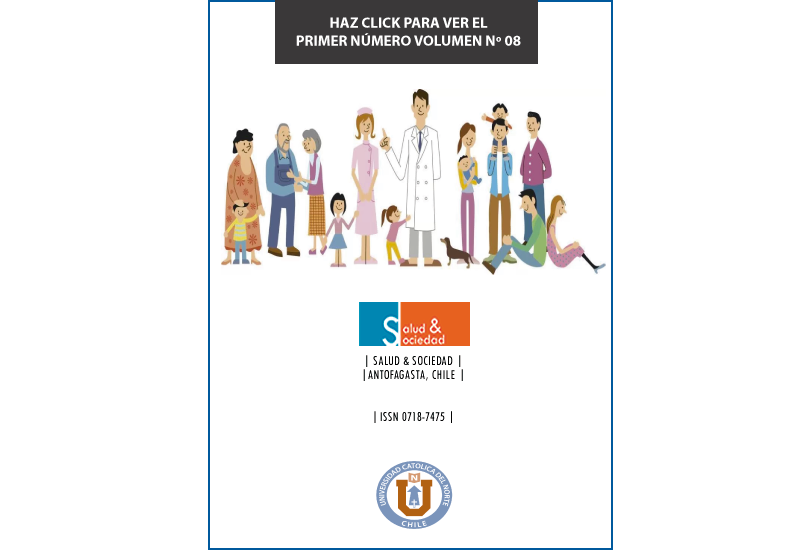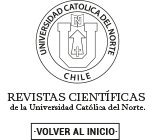The WHODAS 2.0 in Puerto Rico: psychometry and its relation with global activity assessment scale with psychiatric patients
DOI:
https://doi.org/10.22199/S07187475.2017.0001.00006Keywords:
GAF, Latino psychiatric patients, Psychometric properties, WHODAS 2.0.Abstract
OBJECTIVE: To analyze the psychometric properties of WHODAS 2.0 in Puerto Rican psychiatric patients. METHOD: The sample was composed of 200 male and female informants under psychological or psychiatric treatment, who were at least 21 years old. WHODAS 2.0 psychometric properties (both 36 and 12-item versions) were evaluated taking into consideration the internal consistency reliability. In addition, WHODAS 2.0 global score in both versions was compared to the Global Assessment of Functioning (GAF). RESULTS: Both versions of WHODAS 2.0 showed excellent internal consistency reliability. Both versions correlation was statistically significant. Finally, GAF and WHODAS 2.0 correlation was moderate (r=.37), suggesting both instruments assess patients’ disability differently. CONCLUSION: Results appear to indicate that the use of WHODAS 2.0 in clinical contexts is appropriate. However, since WHODAS 2.0 and GAF convergence needs to be studied more thoroughly, caution is advised
References
American Psychiatric Association. (2013). Diagnostic and statistical manual of mental disorders (5th ed.). Washington, DC: Author.
Chávez, L. M., Canino, G., Negrón, G., Shrout, P. E., Matías-Carrelo, Agilar, S., & Hoppe, S. (2005). Mental Health Services Research, 7, 145-159.
Chisolm, T. H., Abrams, H. B., McArdle, R., Wilson, R. H., & Doyle, P. J. (2005). The WHO-DAS II: psychometric properties in the measurement of functional health status in adults with acquired hearing loss. Trends in Amplification, 9(3), 111-126.
Chopra, P. K., Chopra, P. K., Couper, J. W., & Herrman, H. (2004). The assessment of patients with long-term psychotic disorders: application of the WHO Disability Assessment Schedule II. Australian and New Zealand Journal of Psychiatry, 38(9), 753-759.
Dalrymple, K. L., Morgan, T. A., Lipschitz, J. M., Martinez, J. H., Tepe, E., & Zimmerman, M. (2014). An integrated, acceptance-based behavioral approach for depression with social anxiety: Preliminary results. Behavior Modification, 38(4), 516-548.
DeVellis, R. F. (2003). Scale development: Theory and applications. Thousand Oaks, CA: Sage Publications.
Gold, L. H. (2014). DSM-5 and the assessment of functioning: The World Health Organization Disability Assessment Schedule 2.0 (WHODAS 2.0). Journal of the American Academy of Psychiatry and the Law, 42(2), 173-181.
Kim, J, Long, J., Mills, J. A., Downing, N., Williams, J. K., & Paulsen, S. (2015). Performance of the 12-item WHODAS 2.0 in prodromal Huntington disease. Journal of Human Genetics, 23, 1584-1587.
Konecky, B., Meyer, E. C., Marx, B. P., Kimbrel, N. A., & Morissette, S. B.(2014). Using the WHODAS 2.0 to assess functional disability associated with DSM-5 mental disorders. American Journal of Psychiatry, 171, 818-820.doi: 10.1176/appi.ajp.2014.14050587.
Kulnik, S. T. & Nikoletou, D. (2014). WHODAS 2.0 in community rehabilitation: a qualitative investigation into the validity of a generic patientreported measure of disability. Disability and Rehabilitation; 36(2): 146–154.doi: 10.3109/09638288.2013.782360.
Luciano, J.V., Ayuso-Mateos, J. L., Fernández, A., Serrano-Blanco, A., Roca, M., & Haro, J. M. (2010). Psychometric properties of the twelve item World Health Organization Disability Assessment Schedule II (WHO-DAS II) in Spanish primary care patients with a first major depressive episode. Journal Affective Disorders, 121, 52-58.
Magistrale, G., Pisani, V., Argento, O., Incerti, C. C., Bozzali, M., Cadavid, D., & Nocentini, U. (2014). Validation of the World Health Organization Disability Assessment Schedule II (WHODAS-II) in patients with multiple sclerosis. Multiple Sclerosis Journal, 21(4), 448-456. doi: 10.1177/1352458514543732.
Marx, B. P., Wolf, E. J., Cornette, M. M., Schnurr, P. P., Rosen, M. I., Friedman, M. J., & Speroff, T. (2015). Using the WHODAS 2.0 to assess functioning among veterans seeking compensation for posttraumatic stress disorder. Psychiatric Services, 66(12), 1312-1317.
Morrison, J. (2014). DSM-5 made easy: The clinician’s guide to diagnosis. New York: Guilford Press.
Organización Mundial de la Salud (2015). Medición de la salud y la discapacidad: manual para el cuestionario de evaluación de la discapacidad de la OMS. Recuperado de: http://apps.who.int/iris/bitstream/10665/170500/1/9874573309_spa.pdf.
Paris, J. (2013). The intelligent clinician’s guide to the DSM-5. New York: Oxford University Press.
Ruocco, A. C., Lam, J., & McMain, S. F. (2014). Subjective cognitive complaints and functional disability in patients with borderline personality disorder and their nonaffected first-degree relatives. The Canadian Journal of Psychiatry, 59(6), 335-344.
Scorza, P., Stevenson, A., Canino, G., Mushashi, C., Kanyanganzi, F., Munyanah, M., & Betancourt, T. (2013). Validation of the ‘‘World Health Organization Disability Assessment Schedule for Children, WHODASChild’’ in Rwanda. Plos ONE, 8(3), doi:10.1371/journal.pone.0057725.
Sjonnesen, K., Bulloch, A. G., Williams, J., Lavorato, D., & Patten, S. B. (2016). Characterization of disability in Canadians with mental disorders using an abbreviated version of a DSM-5 emerging measure: The 12-Item WHO Disability Assessment Schedule (WHODAS) 2.0. The Canadian Journal of Psychiatry, 61(4), 227-235.
Üstün, T.B. , Chatterji, S., Kostanjsek, N., Rehm, J., Kennedy, C., Epping-Jordan, J., Saxena, S., von Korff, M., Pull, C. (2010). Developing the World Health Organization Disability Assessment Schedule 2.0. Bulletin of the World Health Organization, 88, 815-823. doi:10.2471/BLT.09.067231.
Üstün, T.B. , Chatterji, S., Kostanjsek, N., Rehm, J. (Eds.). (2010). Measuring Health and Disability: WHO Disability Assessment Schedule (WHODAS 2.0). Geneva, Switzerland: Author.
Vázquez-Barquero, J.L., Vázquez, E., Herrera, S., Saiz, J., Uriarte, M., Morales, E., Gaite, L., Herrán, A., Üstün, T.B. y Grupo Cantabria en Discapacidades. (2000). Versión en lengua española de un nuevo cuestionario de evaluación de discapacidades de la OMS (WHODASII): fase inicial de desarrollo y estudio piloto. Actas Españolas de Psiquiatría, 28(2), 77-87.
Published
How to Cite
Issue
Section
Los autores continúan como propietarios de sus trabajos, y pueden volver a publicar sus artículos en otro medio sin tener que solicitar autorización, siempre y cuando indiquen que el trabajo fue publicado originariamente en Revista Salud & Sociedad (ISSNe:0718-7475).



_(1).png)





